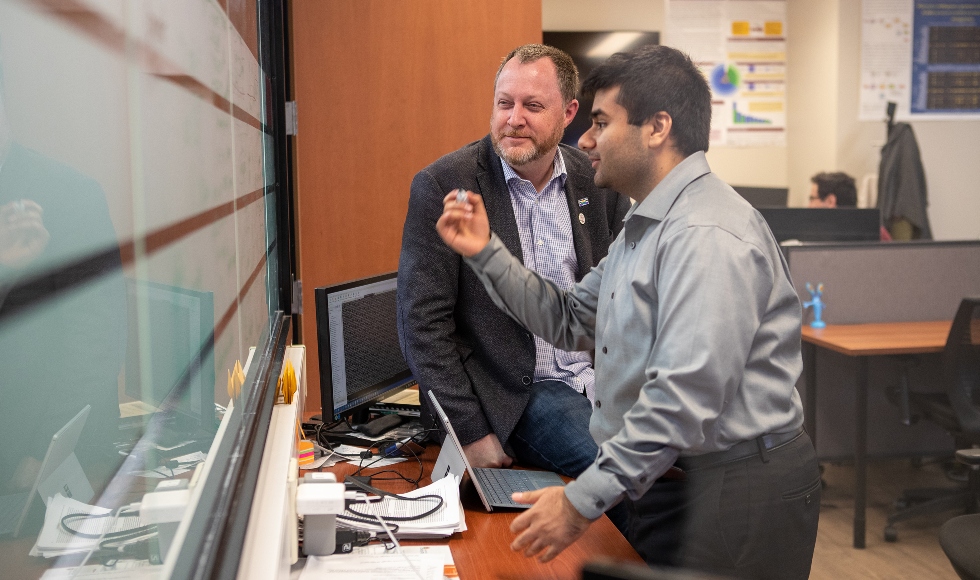McMaster develops tool for coronavirus battle

Associate professor Andrew McArthur, left, and PhD candidate Jalees Nasir are authors of the study. Photo by Georgia Kirkos
BY Tina Depko, Health Sciences
February 28, 2020
McMaster University researchers have developed a tool to share with the international health sciences community which can help determine how the virus that causes COVID-19 is spreading and whether it is evolving.
Simply put, the tool is a set of molecular ‘fishing hooks’ to isolate the virus, SARS-CoV-2, from biological samples. This allows laboratory researchers to gain insight into the properties of the isolated virus by then using technology called next-generation sequencing.
The details were published on Preprints.org.
“You wouldn’t use this technology to diagnose the patient, but you could use it to track how the virus evolves over time, how it transmits between people, how well it survives outside the body, and to find answers to other questions,” said principal investigator Andrew McArthur, associate professor of biochemistry and biomedical sciences, and a member of the Michael G. DeGroote Institute for Infectious Disease Research (IIDR) at McMaster.
“Our tool, partnered with next-generation sequencing, can help scientists understand, for example, if the virus has evolved between patient A and patient B.”
McArthur points out that the standard technique to isolate the virus involves culturing it in cells in contained labs by trained specialists. The McMaster tool gives a faster, safer, easier and less-expensive alternative, he said.
“Not every municipality or country will have specialized labs and researchers, not to mention that culturing a virus is dangerous,” he said.
“This tool removes some of these barriers and allows for more widespread testing and analyses.”
First author Jalees Nasir, a PhD candidate in biochemistry and biomedical sciences at McMaster, has been working with McMaster and Sunnybrook Health Sciences Centre researchers to develop a bait capture tool that can specifically isolate respiratory viruses. When news recently broke of COVID-19, Nasir knew he could develop a “sequence recipe” to help researchers to isolate the novel virus more easily.
“When you have samples from a patient, for example, it can consist of a combination of virus, bacteria and human material, but you’re really only interested in the virus,” Nasir said. “It’s almost like a fishing expedition. We are designing baits that we can throw into the sample as hooks and pull out the virus from that mixture.”
The decision was made to release the sequences publicly without the normal practice of peer-review or clinical evaluation to ensure this tool was available to all quickly, recognizing the urgency of the situation, said McArthur.
The research team plans to collaborate with Sunnybrook for further testing, but also hopes other scientists can quickly perform their own validation.
McArthur added that a postdoctoral fellow in his lab, David Speicher, is currently communicating details of the technology to the international clinical epidemiology community.
“Since we’re dealing with an outbreak, there was no value in us doing a traditional academic study and the experiments,” said McArthur. “We designed this tool and are releasing it for use by others.
“In part, we’re relying on our track record of knowing what we are doing, but we’re also relying on people who have the virus samples in hand being able to do the validation experiment so that it’s reliable.”
The research was funded by the Comprehensive Antibiotic Resistance Database at McMaster.


